Cuties. Chandlers. Cilantro. They all start with the letter C, but what else do those words have in common? Popularity. Thanks primarily to a — well — cute marketing campaign, Cuties are lunch-box standards, as well as a brand consumers (and their kids) ask for by name. Most people know a Chandler is a walnut, though they may never have heard of varieties like Sers, Tulare and Franquette. And it’s difficult to find a New York Times Cooking recipe lately that doesn’t call for cilantro, edging out parsley as the herb of choice. Which brings up an interesting question: Do consumer preferences impact farmers and what they choose to grow?
“The reality is every single thing we grow and sell as farmers is influenced by consumer behavior,” Mary Kimball writes in an email, noting the current demand for gluten-free products as an example. She’s the CEO of the Center for Land-Based Learning in Woodland. We talked to local farmers and food experts to find out how consumer behavior affects what’s grown in the fields and on the vine.
Tasting the difference
In 1990, Jay Colombini started buying land in and around Linden, an agricultural community in San Joaquin County, including walnut trees that had been planted near the end of World War I. His son, Jason, took over the managerial reins after finishing grad school. They grow several varieties, but Chandler is the walnut of choice right now.
Annie Main (right), co-founder of Good Humus Produce near
Woodland, and Rogelio Ramirez harvest basil. Main says she
decides what to grow based on what she wants to eat.

There are a few factors that influence walnut-buying habits, Jay says, and they have little to do with taste. The first is color. Lighter walnuts sell better. Second is size; bigger is better. Third is shell appearance. Blemishes are bad; easy-cracking ability is good.
Jay says the market for walnuts in China took off in the 2000s because having whole walnuts in the house was a sign of prosperity. Consumers wanted good-looking walnuts, but not necessarily the best-tasting. That preference for pretty walnuts caught on, and Chandlers gained in popularity and name recognition.
The overseas market is gradually drying up, in part because China started growing their own walnuts. Add in tariff and water issues, shipping disruptions during the pandemic and a short shelf life, and you see the challenges for walnut growers. What does this mean for the Colombinis? Their lower-yielding but better-tasting varieties will likely be replaced by Chandlers because they sell — even though the price paid to growers is at an all-time low.
“Every walnut farmer I know lost money on their walnut crop last year,” Jason says. And it’s not as if they could quickly pivot to another walnut variety if consumers have a falling out with Chandlers, because it takes time for new trees to mature.
Sacramento County Farm Bureau Executive Director Amber McDowell says one of the fallacies consumers have is pretty produce is better. “I’ve noticed a lot of people are really picky. They want beautiful, perfect fruit. … They will go for the brightest colors, perfect shape. And sometimes they are missing out on the flavor or quality of some of these really good varieties,” she says. “It’s more of that educational piece that got lost as people got farther away from the farm. People don’t have parents or grandparents who are working on a farm. They don’t get to see those aspects anymore, so they’re really disconnected from how their food is grown and how it’s harvested, what makes certain products better than others.”
Educating consumers is something Robert Bonk at Snow’s Citrus in Newcastle does a lot. He wears many hats: citrus grower, farmers market vendor and manager, community college teacher and “de facto ag-technology guy” for UC Davis. He grows Owari satsuma mandarins, along with lemons, limes, kumquats and other produce. As a farmer who sells direct, he has a forum for educating consumers about buying processed and packaged versus fresh produce.
“One of the things we’ve had to deal with is doing a little education with our customers about what to do with fruit that’s not already peeled for you,” he says. “From a farmer’s perspective, the hardest thing you have to overcome is getting the customer to understand the difference, and that understanding comes from allowing them to taste (the fruit). They taste it, and they taste the difference.”
Robert Bonk of Snow’s Citrus uses his platform as a
direct-to-consumer farmer to educate people about produce.

People have referred to his mandarins as Cuties, but he doesn’t take offense. Cuties is a brand owned by Sun Pacific, and a strong selling point is that their citrus is seedless. Sun Pacific’s growers place nets on their trees to prevent bees from cross pollinating different citrus varieties. Bees equal seeds, which is a problem when you’re promoting convenience.
Bonk thinks citrus tastes better with seeds, but a lot of customers expect the same taste and quality no matter where the fruit is grown or purchased. The “beauty of the farmers market” is each grower’s produce will have unique characteristics based on their growing practices and local conditions, which allows customers to discover new flavors and varieties they may not find in the grocery store, he says. In contrast, “the grocery store is about uniformity.”
The power of the bandwagon
Randii MacNear is the manager of the Davis Farmers Market. She recalls that a reporter from The New York Times once referred to farmers markets as a “fad.” Clearly, that was incorrect. The Davis Farmers Market pulls in around 5,000 to 7,000 people on Saturdays and about 3,000 on Wednesdays during Picnic in the Park events, she says.
Like Bonk, MacNear believes a certain percentage of shoppers are drawn to farmers markets because they prefer to buy directly from farmers; those markets in turn create an opportunity to connect with and educate consumers, an experience absent from most large-box stores. Nugget Markets and Whole Foods are emulating the design and layout of farmers markets in their produce departments, she says, which is a good thing. You know where the food comes from; you’re making a choice to buy local, regional or from somewhere else, to buy organic or not organic, packaged, processed or not.
To those who argue farmers markets are expensive, MacNear challenges shoppers to consider how much they spend at Starbucks or for a cocktail. “They have a different picture in their mind of what is an okay amount of money to spend on fruits and vegetables.”
Annie and Jeff Main from Good Humus were one of three families who started selling produce at the Davis Farmers Market in 1976. The family also grows flowers, apricots, nectarines, tangerines, lemons and grapefruit, along with vegetables. Some will end up in farm boxes or as CSA (community-supported agriculture, a program that allows customers to invest in a farm in return for a share of the produce).
Their CSA program has about 100 to 125 members.
Annie Main still enjoys giving out samples at the market. Take apricots. Some people think of apricots as bland fruit that tastes like cardboard. At Good Humus, Royal Blenheim apricots are popular because they taste good. They’re also only available fresh for three weeks out of the year.
“We pick fruit we really love to eat,” Main says, reached by phone while hand-sorting peaches. But there are multiple things Annie and her family consider, including sales and an aging crew, when deciding what to plant and what to eliminate. White eggplant was a bust. Sweet peas didn’t stay fresh, so they were cut. And cilantro?
“Someone called and said, ‘Do you have cilantro?’ Cilantro is now a health food item. And it’s going for ridiculous amounts of money,” she says. “Maybe cilantro is really healthy; I don’t know. At that point we make a decision; do we want to jump on that bandwagon or not?”
The takeaway is consumers have incredible power based on how and where they spend their money. “I think they should know that,” Annie says.
Recommended For You
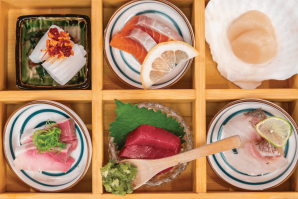
Omakase Reimagined
The Japanese tasting menu concept is branching out to other cuisines
Omakase has evolved from a Japanese culinary tradition mostly associated with high-end sushi restaurants to a dining concept that accommodates a wide range of palates.
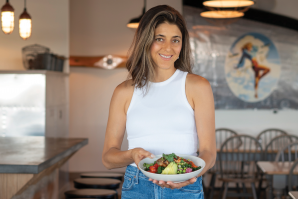
Savor the Layover
These local airport restaurants are worth the trip
If you’re in the Capital Region, there are plenty of interesting options — and not only at Sacramento International Airport, which is set to have a major refresh of its dining program by 2025. Whether you’re flying a jumbo jet or a crop duster, you’ll find something to nosh on when you land in and around Sacramento.
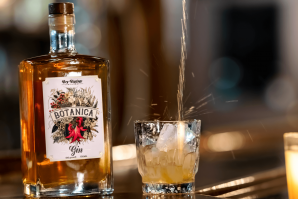
Luscious Libations
Distilleries use local, natural flavors to enhance their creations
Whether in Sacramento or the upper climbs of the Gold Country, craft distillers are ready to give the drinking public a taste of all of the possibilities within libation.
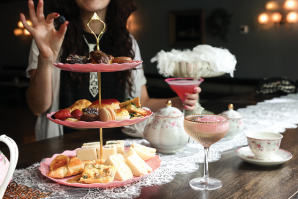
Is Tea the New Happy Hour?
These Capital Region tea rooms bring a California twist to an English tradition
Afternoon tea evokes something people have always sought — “a feeling of rarely experienced elegance and class,” Mueller says.
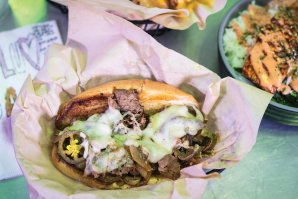
Jet’s Sets Off
This Midtown hotspot started out as a college student’s pandemic project
When Jet Bonanno started his shoestring home-based food operation, he never dreamed it would morph into a thriving brick-and-mortar restaurant. But that’s exactly what happened when Bonanno opened Jet’s American Grill & Bar at the ripe old age of 22.
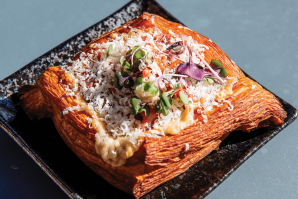
Pop-Up Popularity
Female chefs and bakers find success outside the traditional restaurant model
These nomadic eateries, which surged in popularity around the Great Recession, came in vogue again during the COVID-19 pandemic, often as the only option for cooks in lockdown.




